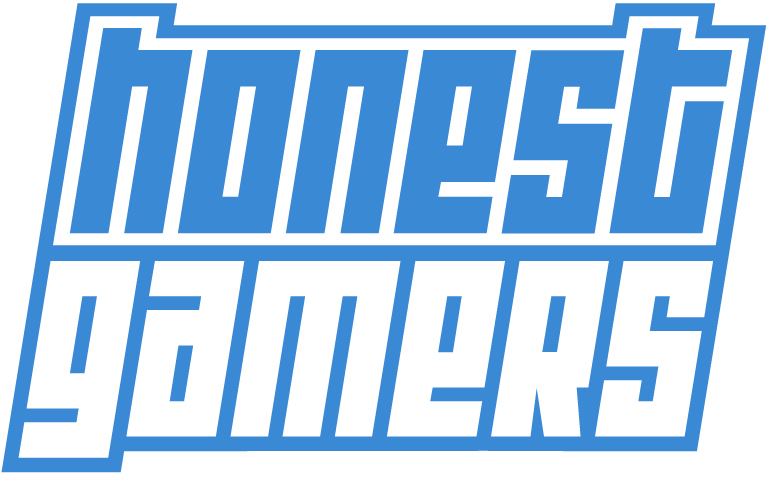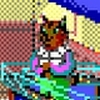Broken Sword: Shadow of the Templars - The Director's Cut (DS) review"Itís all in Directorís Cut. But so are those trade offs." |
Broken Sword: Shadow of the Templars: The DirectorĎs Cut defies the usual port complaints by opening up with a completely new scene of sassy French photo-journalist, Nico, visiting the home of a retired media mongrel at his bequest. Itís prefaced with the expected birdís eye tour of Paris in Autumn that previous incarnations showcased, but not with American tourist and professional busybody George Stobbartís lazy morning being ruined by a bomb-packing clown. Instead, Nicoís dream interview is intruded by a homicidal mime and a swift blow to the head.
This starts an interesting duality that the original game never saw. While George makes his expected appearance sooner rather than later, the promise of more involvement from the ever-distant Nico is welcome, as is the slow uncovering of the motives behind why she so desperately wants to follow the chain of international murders the game is centred around. To this end, she snoops around the deceased manís mansion, evading the ire of his newly-classified widow and steals anything of worth she can find, from ornate hand-carved wooden elephants, tubes of canvas paint and the contents of a hidden and electronically-sealed safe.
Itís a somewhat backhanded trade-off. While it does present a fresh angle to an already stellar and engaging plot-driven mystery title, a lot of what makes Broken Sword one of the foremost point and click adventures is left by the wayside. Character portraits now adorn the top screen in an appreciated touch, giving the cast member you control a new albeit limited lease on life courtesy of the same facial expressions repeated constantly. Missing, though, is the originalís fantastic voice acting and without that, a very large slice of the characters' personality withers away. The majority of the lines are intact, and the exchanges between characters and the progression of the story remains the titleís top selling point, but so much is lost when, instead of the expected voice work the industry still now struggles to match, you get lines of text instead.
Itís a shame, because itís really the people in Broken Sword that make the title memorable, even in its neutered form. Most of the story revolves around George, a law student from California whoís simply not as clever as he likes to think he is. Vacationing in Paris, he unwittingly becomes tangled up in a century-old conspiracy after chancing across glamorous photo-journalist Nico, then doing his level best to impress the hell out of her. The game never outright tells you so, but he subtly stumbles around her, lapping up as much attention as he can ascertain while she uses her feminine wiles to keep him keen, teasing him with stories of other would-be suitors. But the underlying connection between the pair is genuine; Nico opens up about her guarded past in subconscious bubbles floating between words of murder, ancient holy sects and betrayal, while George will shrug off his pseudo-intellectual wisearse routine the more comfortable he gets around her. Somewhere in between all this oozing personality is a chain of murders stretching back to the crusades and several people in envious positions that donít take kindly to the dual protagonists' snooping.
As such, itís as easy to get lost in the narrative as it is to be stumped by the lateral puzzles that bar progression. Before the recent revival of point and click adventures, Broken Sword was heralded as the last big hurrah for the genre, and the logical but taxing puzzles that never stray into the ludicrous play a big hand in this praise. Early on, Georgeís chase of the explosion-happy clown leads to an abandoned back alley. After some examination, pulling on dilapidated guttering to ensure it canít hold the weight of the fleeing killer and checking the reeking trashcans stacked nearby arenít being employed as particularly unsavoury hidey-holes, only a solid metal sewer lid remains as the villains likely escape route. Thereís a nearby workman, sweaty, obese and very, very French, but heís not enamoured with lending his tools to the busybody American tourist. Using only items gleaned from the back alley and what little of the cafť remains exportable post-explosion, George has to offer something of worth to the workman, or trick him into leaving his post entirely.
But, mainly, he stumbles headfirst, clumsy and over-confident, through any obstacles that block his path. When he tries to match wits with a bored handyman he finds his supposed intelligence drown by a wave of unrelenting indifference. This forces him into a spontaneous and complex multi-step plan involving public payphones and an only-slightly willing patsy. When trying to impress the locals of a quaint Irish pub with his law-trained intellect, he finds himself cerebrally assassinated, ruthlessly and unapologetically, by the regulars often enough for them to eventually feel sorry for the arrogant Yank they assume is trying too hard. Georgeís adventure is crammed full with personality and charm; characters who other titles relegate to background decoration sprouting uninspired lines needed to nudge the player onwards are given lives of their own. Distinct, engaging personalities that stop them from being a human-shaped question-and-answer box.
Itís all in Directorís Cut. But so are those trade offs.
Taking Broken Sword on the road means more than losing out on the voice acting that has some ten years later still yet to be surpassed, but added in is an obnoxious amount of hand-holding as if to confirm that the gamers of old were an altogether smarter bunch than those catered for today. Gone are the situations where you need a dash of quick thinking in order to keep George alive. Need to trick a cold-blooded assassin holding you at gunpoint on the ledge of a cliff with nowhere to run? While you try and figure this out, heíll patiently stand there with his pistol levelled at your head from now until forever. A hint system is included, threatening gamers with a running count thatís supposed to shame them into not employing it, but offers no penalties for doing so.
The main selling point, then, lies in the extra chapters presented by Nicoís private investigation to peek beneath the seemingly perfect veneer of a Paris socialite that promises to make her involvement in the game all the more personal. Itís a promise that never gets fulfilled; three bite-sized chapters clumsily shoehorned in to the main plot adds nothing but a scant handful of lines duct-taped on to the ending. Itís an anticlimactic conclusion when compared to the promises exhibited by Directorís Cut's brave decision to start things off on unfamiliar ground. Itís also perhaps the best way of summing up the experience with my revisit to Revolutionís 1996 PC classic spruced up and presented afresh on the DS.
The titleís more than good enough to overwrite any complaints the conversation throws up, but it's silly to pretend that a vastly superior copy doesnít already exist out there. If you donít mind playing a neutered version of the first Broken Sword, then you can still enjoy its numerous highlights and still get a lot out of potentially one of the best told interactive tales this medium will ever see. Or you could man up and buy the PC version, playing the game how itís meant to be played.
 |  |  |  |  |
Staff review by Gary Hartley (August 30, 2009)
Gary Hartley arbitrarily arrives, leaves a review for a game no one has heard of, then retreats to his 17th century castle in rural England to feed whatever lives in the moat and complain about you. |
|
More Reviews by Gary Hartley [+]
|
|
If you enjoyed this Broken Sword: Shadow of the Templars - The Director's Cut review, you're encouraged to discuss it with the author and with other members of the site's community. If you don't already have an HonestGamers account, you can sign up for one in a snap. Thank you for reading!
User Help | Contact | Ethics | Sponsor Guide | Links








